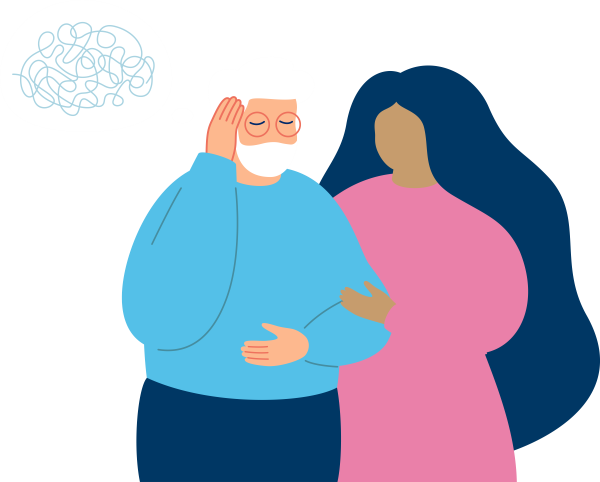
There seems to be plenty of practical advice out there on dressing someone with dementia. Providing clothes that are easy to get on and off for toileting, velcro slippers, laying clothes out in the right order for dressing. Most of this advice is about convenience. We might allow our clients to make a choice between a blue cardigan or a pink one, but do we really consider how much appearance actually matters to someone with dementia?
How we dress and do our hair and make up is part of our individuality. Maintaining our appearance is important for our dignity and self-esteem. It is an indicator of our well-being and affects how others perceive us. If you normally wear your hair in a trendy ‘messy bun’ and wear bright leggings and pink lipstick to work, what would your colleagues think if you came to work tomorrow with lank hair, wearing baggy grey jogging pants and no make-up? They would immediately wonder what was wrong. And how would it make you feel… embarrassed… undignified… miserable? Our appearance tells people something about us and causes judgements to be made, whether consciously or subconsciously. You are less likely to interact with someone in their nightwear. This subconsciously says, “I’m tired, leave me alone.” Isn’t this why we have pyjama days?
We are also judged by our use of language, facial expression and body language. Those in the later stages of dementia have often lost some of these faculties, which can lead to them being judged and treated on appearance alone. As dementia progresses the ability to make decisions and dress and groom oneself diminishes but the ‘sense of self’ is probably more important now than at any other time of your life – otherwise how do people know ‘who you are’? It is as important to help retain the individuality of people with their ‘style’ as it is to find out their food preferences or bathing habits. When you give someone a choice, even if they can’t tell you verbally, look at their facial expression and body language. If shiny shoes or mickey mouse socks generate a smile, then there is your answer.
Of course, comfort and convenience are important and there never seems to be enough time, but time spent finding out your service users’ style and personality in the early days can reap rewards later. Encourage family and friends to bring in photographs and fill in life storybooks or bring in favourite items of clothing, no matter how inappropriate this may seem. A favourite hat, bow tie, handbag or sequinned top is great for reminiscence and may make others smile too. Happier service users are easier to support.
Appearance is a significant part of providing truly person-centred care. If we get this right, we may see our service users bloom with a renewed interest in their appearance and life in general. After all, nobody feels like dancing in Velcro slippers!
Credit to Barbara Lewis at Limon Attire who inspired me to write this blog.






